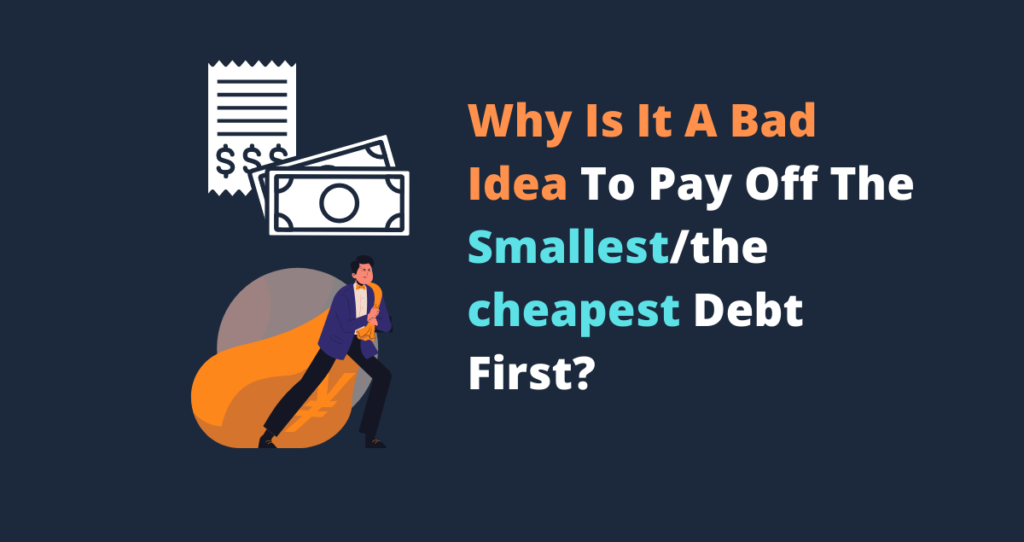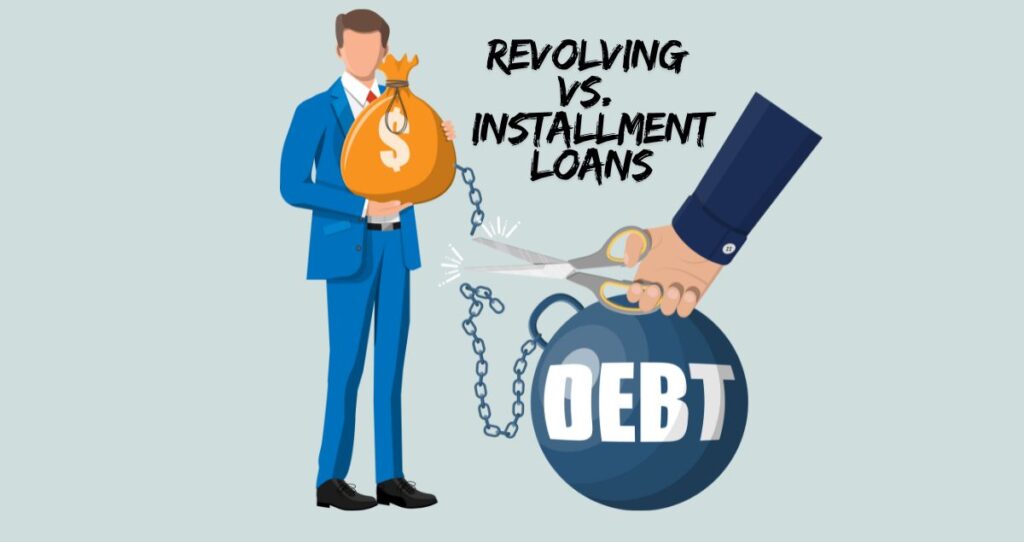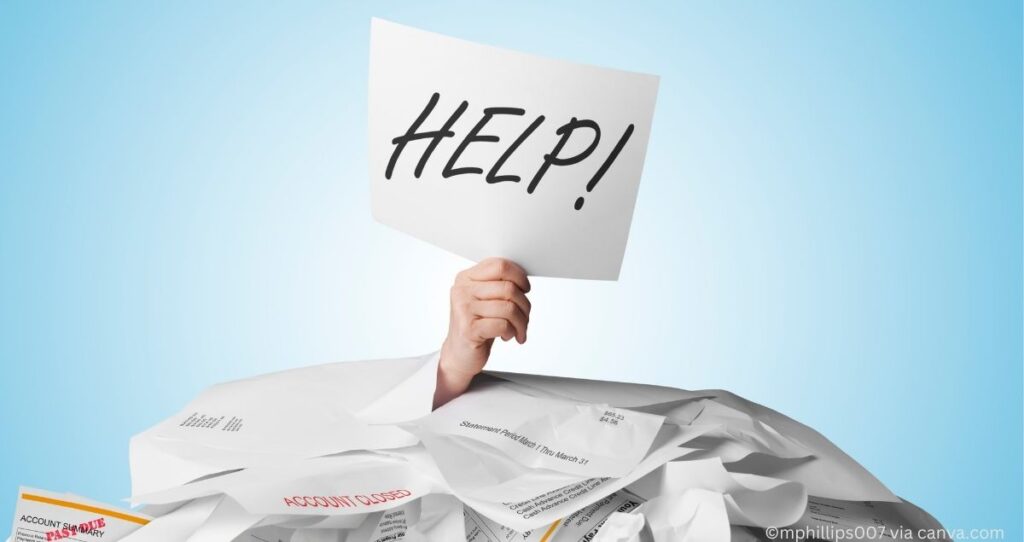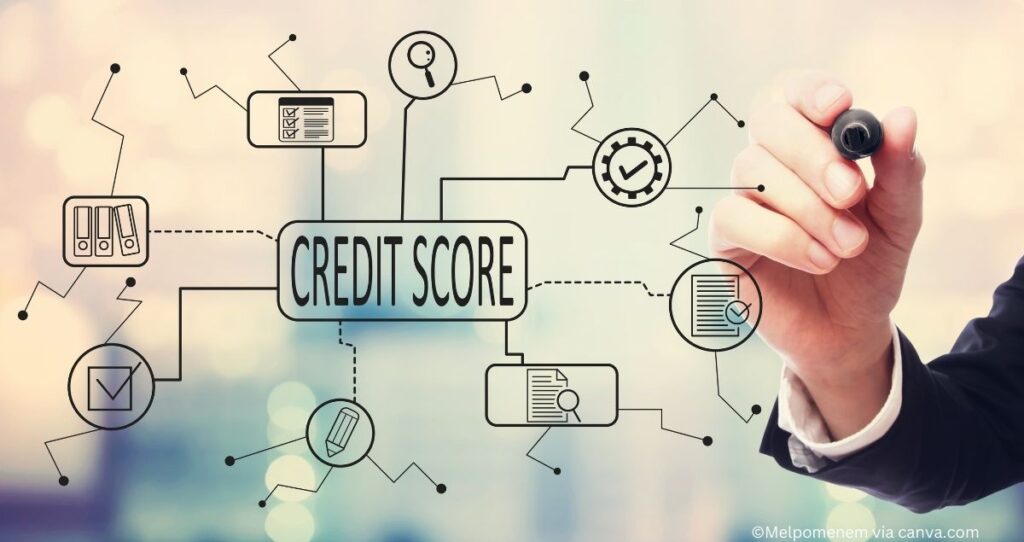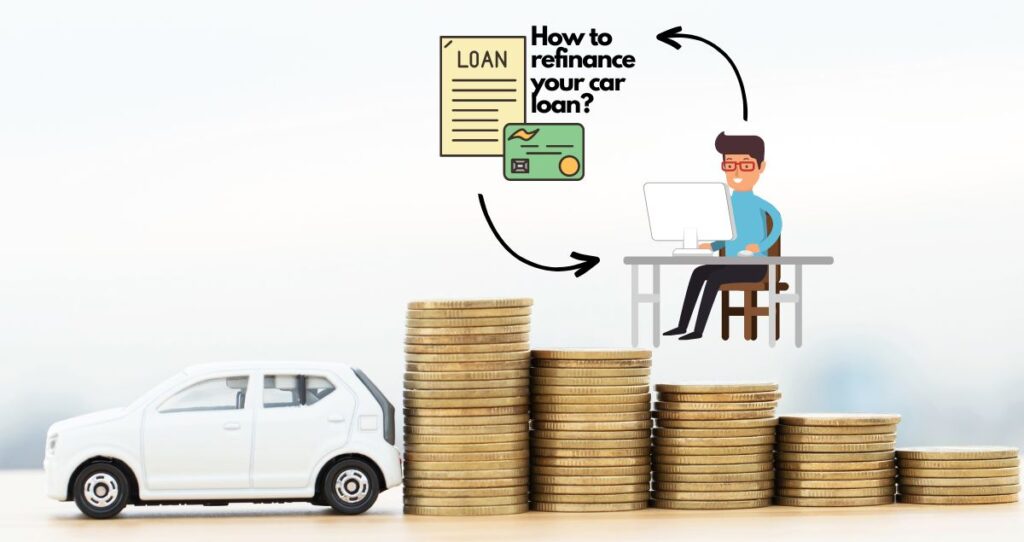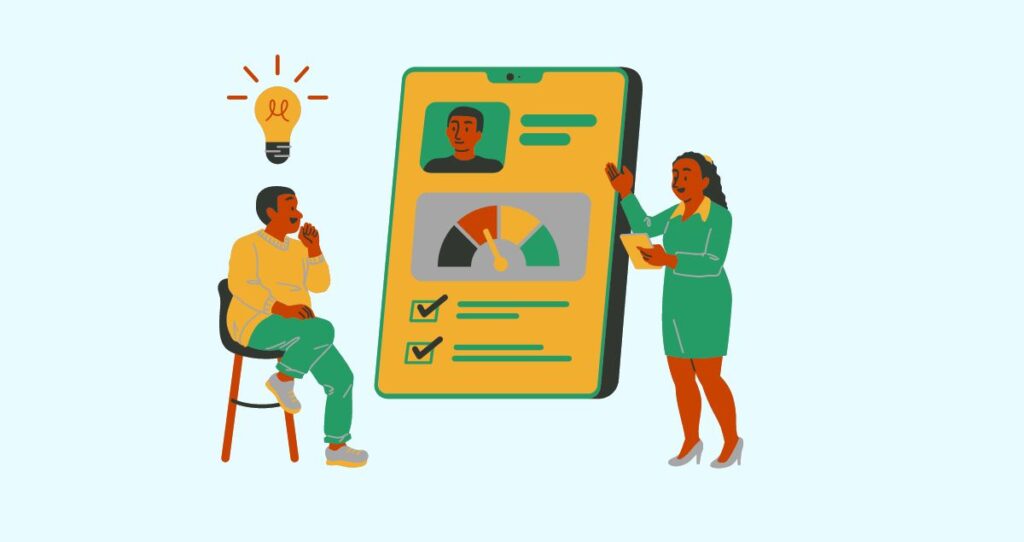Revolving credit is a form of credit that gets renewed automatically as you borrow against the credit line your lender extended to you and pay off your balances. This form of credit gives you easy access to funds and you can pay the balances based on your credit account terms. Usually, the lender gives you a limit to how much you can spend on your credit account known as a credit limit or credit line.
Your revolving credit limit can be increased based on how you use your credit accounts and financial updates such as:
- An increased income,
- Lowering your debt-to-income ratio(DTI ratio),
- Building trust with the lender,
- Increasing your credit score,
- Improved economic conditions, etc.
This article will walk you through how revolving credit works and how it compares with other forms of credit. Furthermore, you will learn exactly how you can pay off revolving credit debt.
More reading: How to Raise Your Credit Score in 30 Days?
What is revolving credit?
Revolving credit lets you borrow against the credit line you have on your account. With this credit, the lender will approve you for a given credit line that you can spend at any time and make purchases of your choice. The credit line on your credit is known as the credit limit or credit line.
As you make purchases, the amount available gets lower and lower until you run out. At this level, you cannot make any other purchases until you pay some of the balances on the account. Any payment you make on your account automatically frees credit you can use for your next purchases. The term “revolving” means that your account gets automatically renewed as you make purchases and pay your balances.
To make sure that you pay balances on your accounts, your lender sends you a bill on a monthly basis. You can either pay all the balances on the account or carry them to the next payment period.
Keep in mind that carrying balances on your credit accounts will result in paying interest rates and charges based on the terms on your accounts.
Example of a revolving credit
A good example of a revolving account is a credit card account. When you apply for a credit card, the card issuer extends credit to you known as a credit limit. Each credit card comes with a different limit depending on your credit score, credit history, DTI ratio, economic conditions, etc.
If for example you have been approved for $2,000 on your credit card, you cannot spend more than this limit. The available credit on the card will go lower as you make purchases until you have spent the whole amount. In order to use your credit card, you must pay some of your balances. Any payment you make on the card frees credit which you can use to make other purchases. You can continue using your credit card and pay it off as long as your account is open.
Installment credit vs. revolving credit
You have probably heard of installment credit if you don’t have one. What’s the difference between revolving credit and installment credit?
Revolving credit is a form of credit where you continuously borrow against a line of credit and pay it off. This gives you easy access to ready-to-use cash and comes with flexible monthly payments.
Installment credit or loan is a completely different type of loan. With installment loans, you borrow a particular amount and pay it off in a fixed number of payments. The terms of the loan can be as low as a few months or as long as 30 years.
For example, when you take out a mortgage to buy a house, this loan is an installment loan due to pre-determined payment schedules for the whole 30-year or 15-year period.
Interest rates on revolving credit vs. installment loans
Installment loans are usually large and might require more effort to qualify. For example, it is easy to get approved for a credit card than an auto loan. The interest rates you pay on installment loans tend to be much lower than what you pay on revolving credit accounts.
According to MarketWatch, the average interest on auto loans for used cars is 3.61% which is calculated based on credit scores for super-prime borrowers. On the other hand, the average mortgage rate on the highest range of credit score is 5.276%, according to QuickenLoans. These rates are nothing compared to the 14.83% interest rate you pay on credit cards on average when you have excellent credit, according to Wallethub.
Since the terms on installment loans are longer and fixed, lenders tend to charge much lower interest rates. The loan amount is also much higher on installment loans compared to revolving credit. In addition, the process of approving you for installment loans is more intense and it might take longer to get approved for loans.
For revolving credit, on the other hand, it is much easier and faster to qualify for credit. The balances on these accounts, however, are much lower compared to installment loans. In order to maximize return on investments(ROIs), lenders charge higher interest rates in the form of annual percentage rates(APRs).
Different types of revolving credit
There are two main types of revolving credit which include secured credit and unsecured credit.
Secured credit is a type of credit where a deposit is required before you open an account. Your deposit will be used as collateral in case you cannot make your payments. Most lenders will extend you credit that is equal to your deposit to minimize their risks. Secured credits are usually good for people who:
- Are new to credit(starting out with no credit)
- Have thin credit files
- Have bad credit scores
Usually, lenders give you a refund of your security deposit when you close your account. Some lenders let you earn your deposit back slowly as you use your credit accounts responsibly.
Unsecured credit is a form of credit where a deposit is not required before opening an account. A good example of unsecured credit is a normal credit card. People with good credit and good credit scores and stable incomes qualify for pretty much any credit card without a deposit. The credit limit on your unsecured credit will depend on the qualify of your credit profile.
3 main categories of revolving credit
There are three main categories of revolving credit accounts. These categories include credit cards, personal lines of credit(PLOC), and home equity lines of credit(HELOC).
- Credit cards. Credit cards are some of the most known categories of revolving credit. Credit cards come in many forms and sizes such as Rewards credit cards(miles, cashback, bonuses), business credit cards, student credit cards, Intro 0% APR Credit Cards, secured credit cards, store credit cards, etc. There are four major credit card companies which include VISA, Discover Networks, American Express, and Mastercard.
- Personal lines of credit(PLOC). A personal line of credit or PLOC is a form of credit where you can borrow money up to the limit. You will withdraw the amount from the account as needed and pay interest on the amount you have spent.
- Home equity line of credits(HELOCs). A home equity line of credit or HELOC is a form of credit where you borrow against the equity you have built in your home. With this setup, you will continuously borrow up to the limit your lender allows you and pay it off. The Equity in your house will be the main factor when estimating the limit on your HELOC. Other factors such as credit score, credit history, DTI ratio, income, etc. will also be considered.
Pros and cons of revolving credits
Revolving credits come in handy when you are in need of continuous cash for normal spending. One thing to keep in mind, however, is that there are pros and drawbacks of revolving credits you should know about.
The following are the pros and cons of revolving credit.
Pros of revolving credit.
- Easy to qualify. Revolving credits are usually easy to qualify for. Of course, you will need to have an income, good credit, and a credit score. But, you will not go through a gruesome process to qualify for these loans. Most lenders will need a simple online application from you to open a new credit account.
- They are Affordable. The term affordable here refers to the fact that what you get approved for reflects your current financial standing. In addition, since your credit line is limited, you can manage your balances easily.
- They are ready to use. Revolving credits are easily accessed and ready to use once approved.
- They are flexible. The process of paying off revolving credits is easy and straightforward. There is no pre-determined amount you must pay each month besides the minimum required payment. That is if you are low on cash this month, you can carry your balances to the next month and only pay the minimum required amount for this month. Keep in mind that you will pay interest on the balance you carry to the next payment cycle.
Cons of revolving credit.
- Easy to accumulate debts. Revolving credit comes with some of the highest interest rates(subject to the type). Without paying your balances in full, you can easily accumulate too much debt.
- Come with lower limits/lower credit lines. Revolving credits have much lower credit lines compared to installment loans.
- Hard to manage. Since you can easily qualify for revolving credit, many people end up having 20+ credit accounts. Having this many accounts becomes difficult to manage and track. Hence, increasing their chances of missing payments and having late payments on their credit reports.
Do revolving credits affect credit score and credit history?
The quick and correct answer to this question is: Yes revolving credit affects your credit. The long answer is detailed below.
Every activity with your credit accounts affects your credit. Every month, you will see your credit score going higher or lower depending on the decision you made with your credit accounts. For example, if you had a late payment on your credit reports, your credit score will slide. You can easily see this information from your annual credit reports.
Your lenders will record all your account activities and report them to major credit reporting agencies. After receiving your credit activities, major credit bureaus will create your credit reports and calculate your credit score using credit scoring models. There are two main scoring models which include the FICO Score Model and the VangataScore model. Each model applies different weights to information from your credit reports when calculating your credit scores. As a result, you will have different credit scores from one credit rating company to another.
How do revolving credits will affect your credit
1. Payment history
Having revolving credit means that you use your credit and pay it off as many times as you want until you choose to close your account. Your payment behavior will be recorded and reported to three major bureaus(Equifax, Experian, and TransUnion). Payment history affects 35% of FICO credit score calculations and 40% of VantageScore calculations. Borrowers who cannot pay back the money they borrowed are the riskiest borrowers. Having late payments on your credit reports will directly hurt your credit and lower your credit score. You could lose more than 100 points from a single late payment.
Late payments can also turn into loan defaults, accounts in collections, foreclosures, or bankruptcies. It all depends on how you choose to proceed after knowing that you are not financially fit to make your payments. The size of your balance could also impact the kind of negative items that get reported on your credit reports.
TIP: To prevent revolving credits from hurting your credit, pay all your balances on each account on time. In addition, do not carry balances to the next payment cycles to avoid interest charges. If you missed a payment, make sure that you cover it within 30 days from the due date. Lenders do not report a missed payment as a late payment until at least it is passed 30 days from the due date. You might still pay late payment fees and interest to your lenders. But, if you catch missed payments and pay them off within that 30 days window, they will not be reported to major bureaus as late payments.
Related: How Late Payments Affect Your Credit Score?
Read: How to remove late payments from your credit report
2. Credit utilization
Credit utilization refers to the amount you owe the lender. In order words, your credit utilization refers to how much you have spent compared to your total credit line/credit limit.
For example, if your total credit line is $3,000 and you have spent $1,500, your utilization ratio will be 50%. Having a higher utilization ratio indicates that you rely on debt to cover your expenses. For this reason, lenders will deny you credit.
Credit utilization affects 30% of your FICO score and 20% of VantageScore. You must lower your credit utilization as much as possible to keep your credit healthy. Just because your lender allowed you to spend money, it does not mean you should spend all of it. Higher utilization also means that you are carrying more balances to the next payment period which comes with interest rates and higher chances of getting in debt.
TIP: Revolving credit comes with higher interest rates which can be difficult to pay them off in case you owe large balances on your credit accounts. You should always keep your credit utilization to under 30% to prevent revolving credits from hurting your credit history and credit score. If you have bad credit and rebuilding your credit score, keep your credit utilization lower than 10%. The lower your credit utilization, the faster you will rebuild your credit.
Related: What is a credit utilization rate and how does it work?
More reading: What is the best credit utilization ratio?
3. New accounts
There are times when the credit extended to you will not be enough. When this happens you will want to apply for higher credit limits or an increased line of credit. Every time you apply for credit, your lender requests to view your credit file which results in a hard inquiry on your credit reports. New credit account activities affect your FICO score by 10%.
Each hard inquiry will lower your credit score by 5 to 6 points on average. In addition, a hard inquiry will stay on your credit reports for 24 months but it will not affect your score after 12 months.
TIP: You can not prevent hard inquiries from appearing on your credit reports. Also, accurate hard inquiries cannot easily be deleted from your reports. That is they will stay on your reports for 24 months. The good news is that you can manipulate how hard inquiries are reported on your credit reports.
A good trick you can use is to apply for all credit accounts in a few weeks’ time period. Lenders will report all account applications to major reporting bureaus. However, some bureaus will treat all hard inquiries received between 14-45 days as a single inquiry. This means that your credit score will suffer from a single inquiry instead of multiple inquiries. Some credit rating models consider related inquiries received in this period as a single inquiry. For example, multiple car loan inquiries might be treated as a single inquiry. If you have to apply for some kind of loan, make sure that you submit all your applications in a short period to take advantage of this financial tip.
Related: How long do hard inquiries stay on a credit report?
4. Credit mix
Credit mix refers to the mixtures of credit accounts you have and it affects your FICO score by 10%. A good mixture is one made of a combination of revolving credits and installment loans.
5. Age of your credit
Age of credit is the average of all ages of open credit accounts you have. Each account you open directly affects your credit age which in the end affects your credit score. Credit age affects your credit score by 15%.
How to pay off revolving credit debt?
Debt comes in many forms and sizes. Revolving credit debt, however, is a different kind of debt. The credit limits/line of credit on revolving debts are lower but they come with higher interest rates. In addition, some revolving credits come with compound interests which make your debt grow when you don’t take action.
The strategy you will need to pay off revolving credit debts is different from installment credit. This is because, for installment credit, you have a precalculated due amount you must pay every month. As long as you pay this amount every month for the entire duration of your loans, you will be fine.
Revolving credit acts differently and comes with completely different terms and structures. For example, if you only pay the required minimum monthly payment on your credit card debts, you will never pay them off. The longer you keep it, the more it grows. Over time, you will realize that you can no longer afford to pay it off. That is why you need a strategy that works.
If you want to pay off credit card debts fast, refer to the following guide.
Credit card debt guide: 6 effective ways to pay off credit card debt
Refer to the following tips when paying off revolving credit debts.
Tips to pay off revolving credit debt
- Stop borrowing. Having a revolving credit means that you continuously use credit extended to you and pay it off. If you keep using your credit line, you will end up with higher credit usage which will make it harder to pay it off. A big mistake many people make is borrowing more money by requesting higher credit limits or extra credit lines. The smartest and first step to getting out of debt is to PREVENT your debt from growing exponentially. That is why you must stop borrowing if you are struggling with debt already.
- Pick a debt payment strategy. There are two debt payment strategies you can choose from.
- Use the Debt Snowball Method. The Debt Snowball Method allows you to pay off your debts starting from the smallest debt first. To use this strategy, you will organize your revolving debts starting from the smallest to the highest. You will then eliminate the smallest debt first while meeting the minimum requirements on other debts. After paying off the smallest debt, you will move to the next smallest debt and continue this process until all your debts are fully eliminated.
- Use the Debt Avalanche Method. With the Debt Avalanche Method, you pay off your debts starting with the highest interest rate first. With this strategy, you organize your debts starting from the highest interest to the lowest interest rate. Next, eliminate the highest interest debt first while meeting the minimum requirements on other debts. After paying off the debt with the highest interest, you will move to the next debt with the highest rates. This process will continue until all your debts are fully paid off. This is an aggressive method and might not yield quick results.
- Make a budget that helps you save more money. Saving is something that every person should focus on whether they are struggling with debt or not. If you are struggling with debt, it is because you borrowed more than you could afford to pay off. For this reason, you need to be aggressive in paying it off. So, make a budget that allows you to save money by reducing your expenses. If something is not a need, stay away from it. You might end up closing entertainment accounts, avoid buying that cool-looking gadget so that you can save more. Allocate all funds you are saving toward paying off your debts.
- Consolidate your debts. Debt consolidation is a strategy that allows you to combine your debts, manage them, and pay them off effectively.
- Consider the balance transfer. A balance transfer allows you to move your current credit accounts from higher interest rates to lower interest rates. Revolving credit accounts come with higher rates. So, if you can have an opportunity to lower your interest rates, take it. A lower interest rate could be a major step in paying off your debts.

